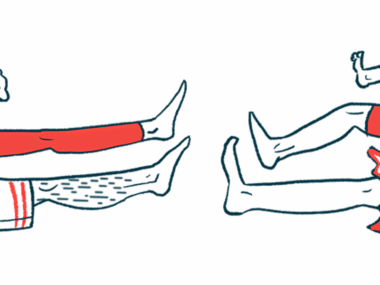FDA approves bilateral ultrasound for Parkinson’s symptoms
Approval expands Exablate Neuro use following positive trial data
Written by |

The U.S. Food and Drug Administration has approved Exablate Neuro, Insightec’s platform for noninvasive, MRI-guided focused ultrasound therapy, for the bilateral treatment of motor symptoms in patients with advanced Parkinson’s disease who no longer respond to medication.
The therapy targets regions within the pallidothalamic tract, a brain pathway involved in motor control and coordination. Exablate was previously approved for unilateral treatment, or that targeting only one side of the brain, of Parkinson’s motor symptoms.
The approval was supported by positive data from a clinical trial (NCT04728295) conducted across the U.S., Europe and Asia, that tested the effectiveness of Exablate on both sides of the brain. Insightec expects the results from the study to be published later this year.
The company said it plans to launch the bilateral procedure in selected centers during 2025 as it continues efforts to establish reimbursement pathways and provide broader access to the treatment.
“This milestone reflects our commitment to expanding access to safe, effective, and incisionless treatment options for people living with Parkinson’s disease,” Maurice R. Ferré, MD, Insightec’s CEO and chairman, said in a company press release. “With this new indication, we’re advancing care for movement disorders and opening the door to life-changing treatment for those who need it now and in the years ahead.”
Focused ultrasound targets brain pathway
Parkinson’s is caused by the progressive dysfunction and death of dopaminergic neurons, nerve cells in the brain that are responsible for making dopamine, a signaling molecule involved in motor control. This results in the disease’s motor symptoms, including resting tremors, slowness of movement, rigidity, and postural and gait issues.
The mainstay treatment includes levodopa, which contains a molecule called L-DOPA that cells can use to produce dopamine, thus boosting dopamine levels. However, its long-term use is associated with dyskinesia — sudden, uncontrolled movements — and motor fluctuations when symptoms are not fully controlled with the medication.
In such cases, patients may undergo surgical procedures, such as deep brain stimulation to normalize the electrical activity in the brain through small wires implanted in the brain, and ablation, or lesioning surgery, to create small lesions in certain brain areas.
Exablate Neuro uses focused ultrasound, guided by MRI, to destroy targeted areas in the pallidothalamic tract through an intact skull. This pathway connects two brain regions involved in motor control and coordination, the globus pallidus and the thalamus.
The procedure does not require implanted hardware and poses less risk than traditional, surgical interventions.
“The ability of MR-guided focused ultrasound to precisely target both sides of the brain and improve disabling symptoms, without the need for a surgical incision or anesthesia, offers new hope for persons with Parkinson’s disease,” said Arif Dalvi, MD, director of the comprehensive movement disorders program at Palm Beach Neuroscience Institute and investigator in the trial.
Exablate Neuro was previously approved to treat essential tremor, shaking that is usually associated with movement, and tremor-dominant Parkinson’s, by targeting the Vim nucleus of the thalamus, a brain region responsible for causing tremors.
The treatment is available for several movement disorders at centers worldwide, including 84 in the U.S.






